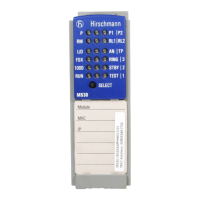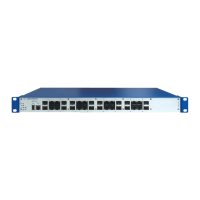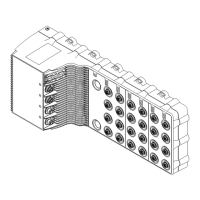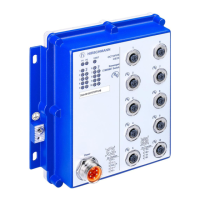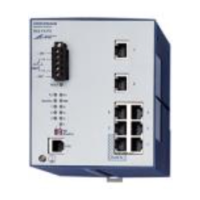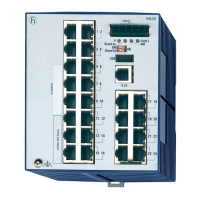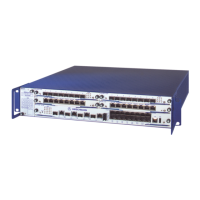QoS/Priority
96
6.2
Port configuration
RM Web L3P
Release
4.1
03/08
6.2.2 Selecting the trust mode
The device provides three options for selecting how it handles received data
packets that contain priority information. Click once on a cell in the "Trust
mode" column to select one of the three options:
X "untrusted"
The device ignores the priority information in the packet and always as-
signs the packets the port priority of the receiving port.
X "trustDot1p"
The device prioritizes received packets that contain VLAN tag information
(assigning them to a traffic class - see „802.1D/p Mapping“) in accordance
with this information.
The device prioritizes received packets that contain no tag information
(assigning them to a traffic class - see „Entering the port priority“) in
accordance with the port priority of the receiving port.
X "trustIpDscp"
The device prioritizes received IP packets (assigning them to a traffic
class - see „IP DSCP mapping“) in accordance with their DSCP value.
The device prioritizes received packets that are not IP packets (assigning
them to a traffic class - see „Entering the port priority“) in accordance with
the port priority of the receiving port.
For received IP packets:
The device also performs VLAN priority remarking.
Port
priority
Traffic class (de-
fault setting)
IEEE 802.1D traffic type
0 2 Best effort (default)
1 0 Background
2 1 Standard
3 3 Excellent effort (business critical)
4 4 Controlled load
(streaming multimedia)
5 5 Video, less than 100 milliseconds of latency and jitter
6 6 Voice, less than 10 milliseconds of latency and jitter
7 7 Network control reserved traffic
Table 8: Assigning the port priority to the traffic classes

